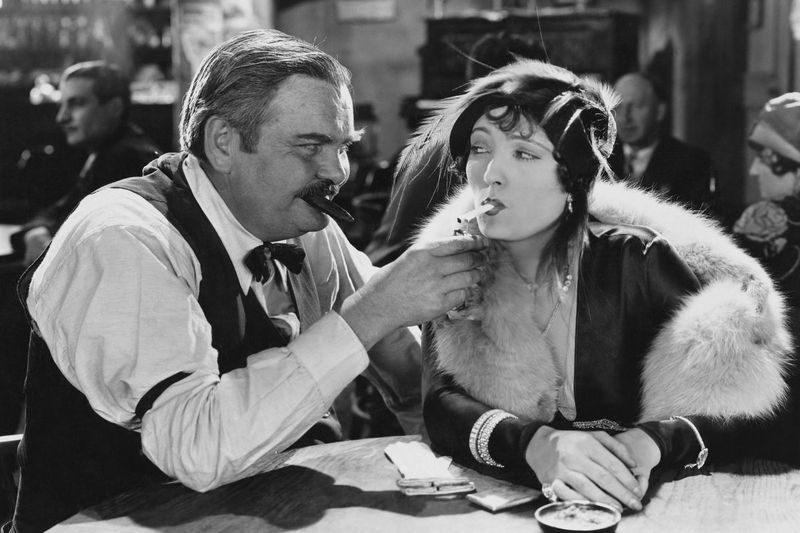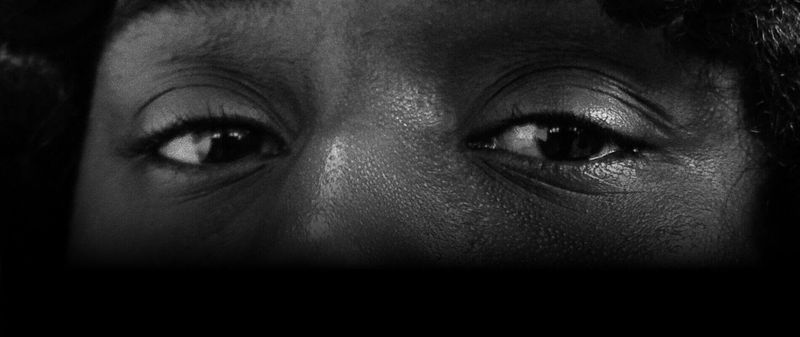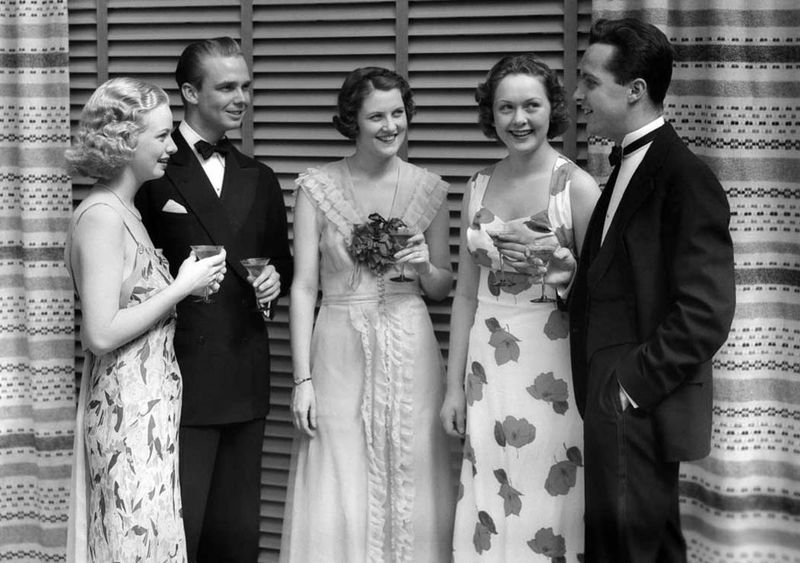The 1970s was a decade of transformation, yet many everyday habits from that era would be deemed unacceptable today. From smoking in public places to casual sexism, these practices reflect a culture far different from our current values. This blog post explores 24 such habits, highlighting how societal norms have evolved.
Smoking Everywhere
In the 1970s, it was common to light up a cigarette just about anywhere—restaurants, offices, and even on airplanes. Smoking was seen as a casual, social activity, and there were few regulations limiting where one could smoke.
Today, this would be unthinkable due to health concerns and strict public smoking laws. The perception of smoking has drastically changed, making it a more private activity.
Many people now prefer smoke-free environments, acknowledging the dangers of secondhand smoke. It’s fascinating how societal views on smoking have shifted dramatically.
Casual Workplace Drinking
In the 1970s, it wasn’t uncommon to find employees enjoying a drink right at their desks or during meetings. The office environment was much more relaxed regarding alcohol consumption, with many workplaces even having designated bars or happy hours.
This casual approach to drinking on the job would be unimaginable today, given the strict workplace policies focusing on productivity and professionalism. The shift reflects a growing awareness of alcohol’s impact on work performance and office safety.
Modern workplaces promote a more focused environment where alcohol is reserved for after-hours events. This change highlights a cultural shift towards accountability and a more inclusive work atmosphere.
Unsafe Cars
Driving without seat belts was commonplace in the 1970s. Cars were not equipped with the safety features we take for granted today, and wearing seat belts wasn’t enforced.
Nowadays, safety standards have dramatically improved, with seat belts and airbags as basic requirements. The emphasis on car safety reflects a broader cultural shift towards prioritizing human life over convenience.
The advancements in automotive technology highlight how far we’ve come in protecting passengers on the road. It’s a stark reminder of the importance of safety regulations.
Littering
Littering was a widespread habit during the 1970s. People thoughtlessly discarded trash in public places, contributing to pollution and environmental degradation. It was a time when environmental consciousness was not as prevalent.
Today, littering is frowned upon, and many communities actively promote cleanliness and recycling. This shift towards environmental awareness emphasizes the importance of caring for our planet.
Recycling programs and public campaigns have played a significant role in reducing litter, reflecting a collective commitment to sustainability.
Unfiltered Advertising
Advertising in the 1970s often involved unfiltered, exaggerated claims about products. Companies used catchy slogans and vibrant imagery to capture consumers’ attention, sometimes bending the truth.
Nowadays, advertising regulations ensure that companies present honest and accurate information to consumers. Misleading advertisements can lead to legal consequences.
This change reflects a growing emphasis on consumer rights and transparency, aiming to build trust between companies and their customers. It’s a testament to the power of informed decision-making.
Corporal Punishment
Corporal punishment was a common disciplinary method in schools during the 1970s. Teachers used physical punishment to maintain order, believing it was an effective way to instill discipline.
Today, this practice is largely banned and considered abusive. Modern educational approaches focus on positive reinforcement and understanding children’s behavior.
These changes highlight a shift towards more humane and effective disciplinary methods. The emphasis on nurturing rather than punishing reflects evolving attitudes towards child development.
Cultural Appropriation
Cultural appropriation was not a widely recognized concept in the 1970s. People often wore clothing or adopted elements from other cultures without understanding or respecting their significance.
Today, cultural sensitivity is more emphasized, and appropriating elements from other cultures without permission is often criticized. The discourse around mutual respect and understanding has grown.
This shift in awareness reflects a broader commitment to cultural diversity and inclusion, encouraging appreciation over appropriation.
Unsupervised Children
In the 1970s, it was common for children to play outside without adult supervision. Parents felt it was safe for kids to explore their neighborhoods freely, fostering independence.
Today, such practices might raise eyebrows due to increased concerns about child safety. Modern parenting often involves structured activities and constant supervision.
This shift highlights changing perceptions of safety and parenting styles. While independence is still valued, ensuring children’s safety has become a priority for many families.
Blatant Racism
Blatant racism was more overt and socially tolerated in the 1970s. Discriminatory language and practices were not uncommon in various social settings, including workplaces and schools.
Today, racism is less socially acceptable, with efforts to promote diversity and inclusion gaining significant momentum. Legal frameworks now support equality and non-discrimination.
The ongoing fight against racism reflects a deepening commitment to human rights and equality, pushing society towards a more inclusive future.
Body Shaming
Body shaming was pervasive in the 1970s, with media perpetuating unrealistic beauty standards. Magazines and advertisements often showcased extremely slim models, promoting narrow ideals of attractiveness.
Nowadays, there is a growing movement towards body positivity and acceptance, celebrating diversity in body shapes and sizes. This cultural shift challenges traditional beauty norms.
The emphasis on self-love and acceptance reflects a broader understanding of mental health and self-esteem. It’s a positive direction towards inclusivity and self-empowerment.
Misogynistic Comedy
Misogynistic humor was a staple in 1970s comedy, with jokes often targeting women as the punchline. Such comedy reflected broader societal attitudes that trivialized women’s experiences.
Today, audiences are more critical of sexist humor, and comedians face backlash for perpetuating harmful stereotypes. There’s a push towards more inclusive and respectful comedic content.
This evolution in comedy highlights changing attitudes towards gender equality and respect, promoting humor that doesn’t come at the expense of marginalized groups.
Diet Culture Extremes
Diet culture in the 1970s was often extreme, with fad diets and quick-fix solutions gaining popularity. Advertisements promised rapid weight loss with little regard for health consequences.
Today’s approach to dieting is more health-conscious, emphasizing balanced nutrition and sustainable lifestyle changes. The focus has shifted from quick results to long-term wellness.
This reflects a growing awareness of the importance of holistic health and the dangers of unrealistic dieting practices. It encourages a healthier, more sustainable relationship with food.
Gendered Toys
Toys in the 1970s were heavily gendered, with distinct sections for boys and girls. Boys were encouraged to play with action figures, while girls had dolls and kitchen sets.
Today, there is a push for more gender-neutral toys, allowing children to explore diverse interests regardless of gender. This shift promotes creativity and individuality.
Challenging traditional gender roles in play reflects broader societal changes towards inclusivity and equality. It’s about empowering children to be themselves without constraints.
Animal Cruelty in Entertainment
Animal cruelty in entertainment was more accepted in the 1970s. Circuses and shows often featured animals performing tricks, with little attention to their welfare.
Today, there is growing opposition to using animals for entertainment, driven by animal rights advocacy. Many circuses have shifted towards human-only performances.
This change reflects a broader commitment to animal welfare and ethical treatment. The push for cruelty-free entertainment highlights evolving values of compassion and respect for all living beings.
Minimal Environmental Regulations
The 1970s saw minimal environmental regulations, with industries often polluting the air and water without consequence. Environmental concerns were not prioritized, leading to widespread ecological damage.
Today, strict regulations aim to reduce pollution and protect natural resources. The rise of environmental activism has driven significant policy changes.
This transformation reflects a growing recognition of the importance of sustainability and environmental stewardship. It’s a collective effort to preserve the planet for future generations.
Disregard for Mental Health
In the 1970s, mental health issues were often stigmatized, and treatment methods were outdated. People faced discrimination and isolation due to their mental health conditions.
Today’s understanding of mental health has evolved, with more compassionate and effective treatments available. There’s a focus on reducing stigma and promoting mental wellbeing.
This shift underscores the importance of empathy and support in mental health care. Society’s growing awareness emphasizes treating mental health with the same respect as physical health.
Hitchhiking
Hitchhiking was a common practice in the 1970s, seen as an adventurous way to travel. Many people felt it was a safe and economical option for getting around.
Today, hitchhiking is largely discouraged due to safety concerns. The potential risks involved have led to a decline in its popularity.
This change reflects heightened awareness of personal safety and the availability of safer, more reliable transportation options. It highlights the evolving priorities in travel safety.
Homophobia
Homophobia was more openly expressed in the 1970s, with discrimination against LGBTQ+ individuals commonplace. Social and legal acceptance lagged far behind modern standards.
Today, there is a stronger push for LGBTQ+ rights and acceptance, with many laws and policies supporting equality. Public attitudes have become more inclusive and supportive.
This transformation underscores a broader commitment to human rights and equality, celebrating diversity in sexual orientation and gender identity. It’s a journey towards a more accepting society.
Workplace Smoking
Smoking in the workplace was a norm in the 1970s, with employees lighting up at their desks during work hours. Offices often had ashtrays scattered around.
Today, workplace smoking is largely banned, reflecting a shift towards healthier work environments. Non-smoking policies are strictly enforced to protect employees’ health.
This change highlights the prioritization of health and wellbeing in professional settings. The move towards smoke-free workplaces is a testament to evolving health standards and awareness.
Dated Dress Codes
Dated dress codes in the 1970s often enforced strict and gendered clothing rules. Men were expected to wear suits, while women adhered to conservative, often restrictive, attire.
Today’s workplaces are more accepting of diverse dress styles, embracing individuality and comfort. Dress codes have become more inclusive and flexible.
This evolution reflects a broader cultural shift towards authenticity and personal expression. It’s a step towards creating more inclusive and diverse professional environments.
Public Spanking
Public spanking was a widely accepted form of discipline in the 1970s. Parents believed that physical punishment was necessary to correct misbehavior.
Today, such practices are frowned upon, with a focus on positive and non-physical disciplinary methods. Modern parenting encourages understanding and communication.
This shift highlights the evolving views on child-rearing and discipline. The emphasis is now on nurturing rather than punishing, reflecting a deeper understanding of child development.
Casual Attitudes to Parenting
Parenting in the 1970s often embraced a laid-back style. Children roamed freely without constant supervision, exploring the world on their terms. It fostered independence but also posed risks.
Today, such practices might raise safety concerns, with modern parenting emphasizing supervision and structured activities. The balance between freedom and safety is a ongoing conversation among parents.
This evolution reflects changing societal expectations regarding child safety and development.
Ignoring Food Allergies
In the 1970s, food allergies were not widely recognized or accommodated. People were generally unaware of the potential dangers, leading to a lack of caution in food preparation.
Today, there’s a heightened awareness of food allergies, with careful labeling and food safety practices in place. Accommodating dietary needs is now a priority.
This change reflects the growing understanding of health and safety in food consumption. It underscores the importance of awareness and care in dietary practices.























